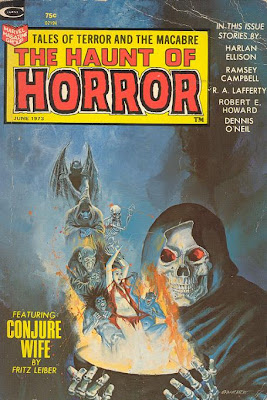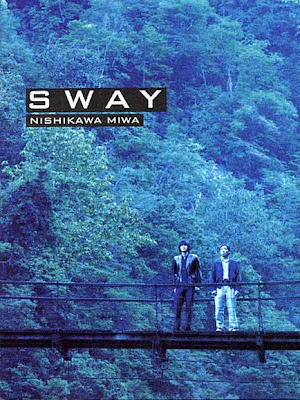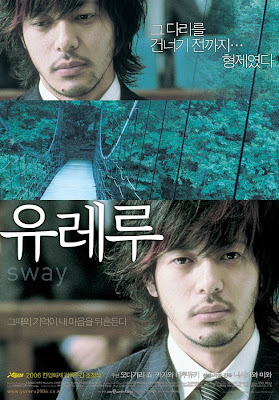
STARCRASH
(Italy/USA, 1978)
Immediately after Star Wars (1977) there was a (meteor) shower of 'sci-fi' movies. By sci-fi I mean 'space fantasy adventure', the sort with goodies, baddies, plastic ray-guns, wise-cracking robots and not a lot of science.
Gone was the intelligent sci-fi that had ruled the decade, following the lead of 2001: A Space Odyssey and Planet of the Apes. The dystopian eco-disasters, the mistrust of androids, the predictions of where humanity was heading - Westworld, Soylent Green, The Omega Man, Silent Running...

But after 1977, everything had to look a lot like Star Wars. James Bond had to go into space in Moonraker (1979). TV had to go into space with Battlestar Galactica (1978) and Buck Rogers (1979).
But space adventure movies need a lorra cash for sets, costumes, and most importantly special effects. The big budgets rolled out in 1979 - Disney threw expensive old-style FX at The Black Hole. Ridley Scott was inspired to switch from a medieval fantasy and make Alien instead. Star Trek returned a decade after cancellation for the first movie Star Trek: The Motion Picture (1979). Flash Gordon arrived in 1980 - it was the film that Lucas had wanted to make, but couldn't get the rights.
But at the same time, there were the low-budgets, a raft of cheaper cheekier awfuller Star Wars-a-likes. Italy moved in quick with the truly terrible The Humanoid (1979) and Starcrash, serving a space-hungry public, getting in quick before Lucas could sort out a sequel. While I still find The Humanoid unwatchably awful, still smarting from a wasted Saturday night thirty years ago. Richard Kiel should never be given lines, let alone carry a picture.
On the other hand, Starcrash is growing on me. Not because its good, but unrelentingly enjoyably bad. Laugh out loud bad.

The plot is somewhat familiar, about an evil baddie who wants to rule the universe and a band of goodies trying to stop him. There's robots, ray-gun shootouts, space battles and a lot of Italian stuntmen.
Part of the joy of it is how consistently and creatively bad it is in all departments - acting, special effects, dialogue, editing, modelwork... Even John Barry's score, a spacey soundtrack from before Moonraker and The Black Hole, actually has several memorable tracks, but they're used on a loop until they're over-familiar.
There's mostly American and British stars in the cast: good actors being bad, bad actors being bad, and Christopher Plummer being so very very professional that his performance and sincerity are hilariously out of place, especially in the silly silver clothes and sub-Barbarella furnishings. Plummer (Dracula 2000, Dragnet, Dreamscape) plays the benevolent Emperor as if he's going for an Oscar.
Joe Spinell (Maniac) as baddie Zarth raises the roof in a pantomime performance that fits the daft dialogue, e.g. "By sunset, I'll be the master of the whole universe!" There's no sunset, Zarth, you're in space. Even better: "Activate the doom machine!", a line straight out of Invader Zim. His greasy hairstyle and mini Princess Leia buns are bizarrely contrary to his bad cop/Bronx hoodlum/serial killer image. He's over-dubbed by a suitably over-enthusiastic mid-Atlantic voice that sort of works.
Hammer heroine Caroline Munro (Maniac, The Golden Voyage of Sinbad, Dracula AD 72) aims her performance at six year-olds, while her costumes are obviously intended for those ten years older. She's enthusiastic, but unable to refuse the stupidest lines.
Marjoe (Food of the Gods) Gortner and (Yes!) a young David Haselhoff duel over who's got the biggest space perm. The Hoff isn't famous just yet, and not on top of the bill, but his presence here almost single-handedly makes this a must-see. For no good reason, he and all the other actors wear mascara. Does it look futuristic? No.
The story structure is just as lacking as the judgement of wardrobe and make-up. By the final big battle, all our heroes are simply hanging back, watching the troops slug it out on a big screen! The decisive laser-gun shootout takes place in what looks like a big white plastic lounge with broken windows, which should really be a major drawback out in deep space.
The special effects aren't. The compositing work is really obvious, part of the picture is far more blurry than the rest, and there's a simple straight-edge dividing theme. The stop-motion model animation (ripping off several Ray Harryhausen characters, like Talos) is poor by even 1930s standards.
There are many, many spaceships slowly flying past the camera, just like the opening shot of Star Wars, but the small scale and lack of detail is pretty poor. What they lack in model-making skills, they make up with colour. One model looks like it's lost a game of paintball, and even the stars look like M&M's.
But I can't say there's ever a dull moment.
Out of all the cheap and fast Star Wars rip-offs, this could be the worst-made but the most entertaining. What you see is exactly what you get. There's no movie magic at work here. Disbelief refuses to be suspended. But it's entertaining rather than logical. Hilariously bad, with the acting and dialogue sealing the deal.
At the very end, Chris Plummer looks to the camera and ad-libs a single-take, long goodnight speech worth its weight in dramatic improvisation. A genuinely magical moment, against all the odds!
We're lucky that something so bad is out on DVD, but only in France at the moment (pictured above). There's English, French and Italian audio tracks, the only drawback is the opening story-so-far scrolling text is in French. It's anamorphic widescreen and there's an original trailer. The scratched print could look better, but it's an improvement on the square, fuzzy VHS transfers out there on bootleg. There's also a French double-disc special edition set, which includes Starcrash 2! I can barely imagine what that's like... Anyone seen it?
Some nutter has built a well-illustrated website devoted to Starcrash with a little on The Humanoid too! We are not alone!.
Anyone name any other bad Star Wars rips worth seeing?
In the meantime, here's a Starcrash trailer on YouTube...









































